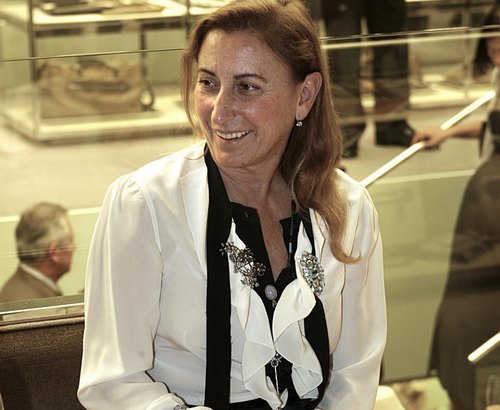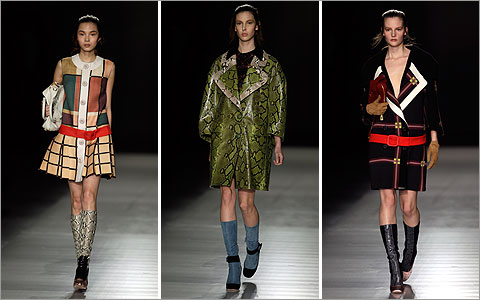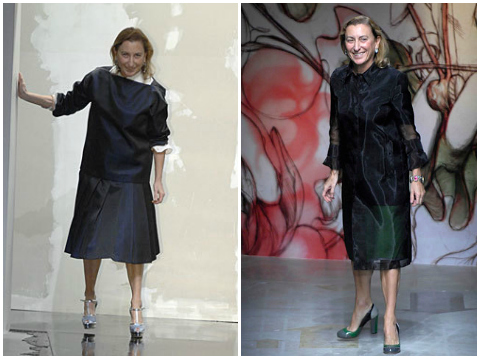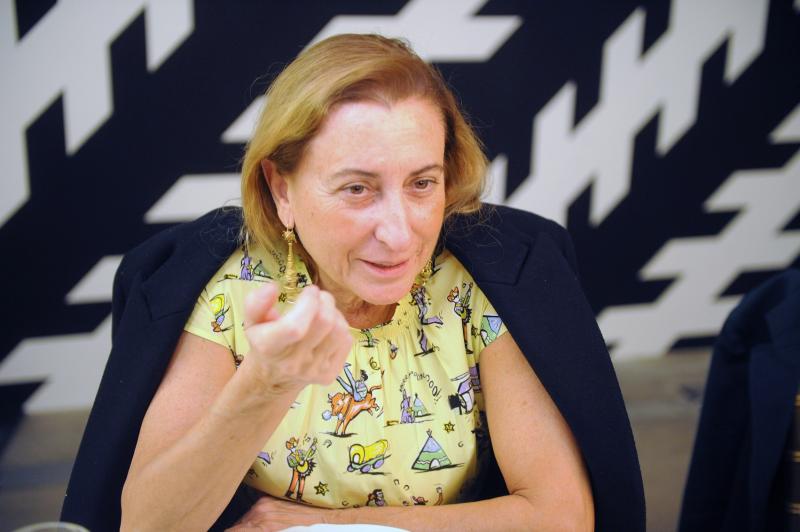Words by Gabi Logan
Mime. Doctor of political science. Communist. Aristocrat. Women's rights activist. Billionaire.
Miuccia Prada is many things. But fashion designer? She only began to see herself as one recently, though it's been her job for 25 years. For the multiple CFDA design award-winning, €10-billion-business-running Prada, fashion is a just a job.
She thinks pants are uncomfortable, so she only wears skirts. She had a slide built connecting her studio to the main Prada office. She wears evening gowns in the morning and cashmere in the summer.
She's hailed as a fashion visionary who seems to have a crystal ball telling her what next major trend will captivate women. Anna Wintour, the steely editor of American Vogue, even told Prada that she only comes to Milan Fashion Week to see her work.
But Miuccia Prada just designs the clothes she wants to wear.
Early Years
Raised among the modern-day Milanese aristocracy, also known as the cognoscienti, Prada was taught from an early age to value femininity, clean lines, and neutral, understated colours. While at university, she became one of the city's aristocommunists, fighting for revolutionary ideals all the while sporting vintage dresses and Yves Saint Laurent.

After finishing her doctorate in political science, she apprenticed for five years at Milan's Teatro Piccolo as a professional mime until her family decided she had had enough fun and needed to do her part in the family business. Though she wished she could do something more important with her life, it would be Miuccia—who thought fashion was a poor use of her time and intellect—who took her family business from one store in Milan to the global powerhouse it is today.
The tipping point for Miuccia, after which Prada's expansion into women's wear, men's wear, active wear, and even art came at a dizzying pace, was one design. A backpack. Not even made of leather, which the Prada brand was known for at the time, this backpack of Italian military-grade nylon was simple, understated, and functional. Exactly the thing a woman of the nineties needed. Fashion critics hailed it as “timeless” and “a balance of functionality and style”. The price climbed to retail at 350 euros by 1995. Today, the bags can’t be found for less than 700 euros.
A fashion star was born.

The Evolution of an Icon
Miuccia Prada's designs at the outset of her career stemmed in part from her personal need to always be ahead of the pack, wearing whatever others weren't and shunning what was popular.
As she grew into her profession, Prada began to devote the same level of study and analysis she once reserved for politics to fashion, specifically the evolution of trends, perceptions of femininity and beauty, and the creation of contemporary culture.
This intellectual approach is precisely what brings about her groundbreaking and status-quo-challenging concepts. Her designs stem not only from what interests her, be it uniforms, lingerie, or vintage glamour, but also from things she dislikes. After despising lace for decades, she set about examining her own and society's perceptions not just of lace but what it represents—sexuality, daintiness, the reveal/conceal dichotomy—and created her famous 2006 collection.

Her husband, the CEO of Prada and driving business force of the pair, has joked that Miuccia is such an amazing designer and hard worker that it was cheaper for him to marry her.
Prada Today . . . And Tomorrow
Mario Prada, the progenitor of the Prada fortune and brand—enjoyed in his time by the Italian royal family and Gracy Kelly—sold leather goods, tortoiseshell hair brushes, and walking canes, while Miuccia sells avant-garde fashions-cum-objets-d'art.
For Prada today, exclusivity and quality is as important as it once was for her grandfather. While several of her contemporaries, including Stella McCartney, Donatella Versace, and Karl Lagerfield, have designed lines for the bargain fashion chain H&M, Prada maintains that she would never do the same.

Because of her political history and scholarship, many ask Prada if she plans to go into politics someday. Now 63, she concedes that it's possible, but she doesn't think anyone would take her seriously. Coming from a woman who designed avant-garde fashion for nearly 20 years before admitting to herself that she was a fashion designer, she probably has stricter standards for herself in this arena than her contemporaries.
Perhaps she will be the next great Italian politician. Surely, she would create the type of government she'd like to be governed by.













